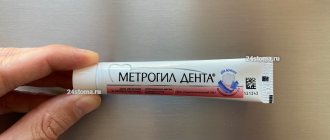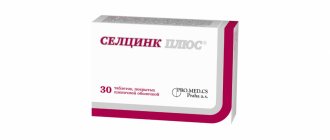Home | About us | Delivery | Advertisers | Login | Registration
Delivery on Sundays and holidays does not work!
- Medicines
- dietary supplementsVitamins
- Categories from A to Z
- Brands from A to Z
- Products from A to Z
- Medical equipment
- beauty
- Child
- Care
- Honey products appointments
- Herbs and herbal teas
- Medical nutrition
- Journey
- Making medicinesStock
Pharmacy online is the best pharmacy in Almaty, delivering medicines to Almaty. An online pharmacy or online pharmacy provides the following types of services: delivery of medicines, medicines to your home. Online pharmacy Almaty or online pharmacy Almaty delivers medicines to your home, as well as home delivery of medicines in Almaty.
my basket
Apteka84.kz is an online pharmacy that offers its customers medicines, medicinal and decorative cosmetics, dietary supplements, vitamins, baby food, intimate products for adults, medical equipment and thousands of other medical and cosmetic products at low prices. All data presented on the Apteka84.kz website is for informational purposes only and is not a substitute for professional medical care. Apteka84.kz strongly recommends that you carefully read the instructions for use contained in each package of medicines and other products. If you currently have any symptoms of the disease, you should seek help from a doctor. You should always tell your doctor or pharmacist about all the medicines you take. If you feel you need further help, please consult your local pharmacist or contact our GP online or by telephone.
© 2021 Pharmacy 84.
Toff plus
Paracetamol
: Paracetamol is rapidly and completely absorbed after oral administration. Absolute bioavailability after oral administration is about 80% and is dose-dependent in the dose range from 5 to 20 mg/kg body weight. It practically does not bind to plasma proteins, and its volume of distribution is about 0.91 kg.
After oral administration, the half-life (T1/2) of paracetamol from plasma is about 2.3 hours in healthy adults, varying from 1.5 to 3.0 hours.
Paracetamol undergoes intensive biotransformation in the liver; its main metabolites are inactive phenol sulfate and glucuronide conjugates. An intermediate product of paracetamol metabolism is usually excreted by the kidneys in the form of mercapturic acid-cysteine conjugates. Glutathione conjugate can be excreted in the bile, but in this case it is cleaved by intestinal peptidases and the digestion products are reabsorbed.
Chlorpheniramine maleate
: After oral administration, it is almost completely absorbed and distributed in the tissues. Maximum plasma concentrations were achieved 2-3 hours after a single dose of 12 mg on an empty stomach.
Unchanged chlorpheniramine (35%), as well as monodemethylated (20%) and didemethylated (10%) metabolites were found in human urine. Chlorpheniramine and its demethylated metabolites are excreted slowly over time.
Dextromethorphan hydrobromide
: After oral administration, dextromethorphan is well absorbed, but undergoes extensive first-pass metabolism in the liver, resulting in its plasma concentration of only 0.1 μg/L after 0.5 hours, and the average maximum concentration after 2.5 hours after a single dose 20 mg is equal to 1.8 µg/l. Dextromethorphan undergoes extensive metabolism in the liver; about 50% of the dose is excreted by the kidneys within 24 hours. Less than 1% of the dose is excreted by the intestines. About 8% of the dose is excreted unchanged by the kidneys within 6 hours.
Phenylephrine hydrochloride:
Absorption of phenylephrine after oral administration varies markedly, and it undergoes extensive first-pass metabolism. As a result, its systemic bioavailability is only 40%, and maximum plasma concentrations are reached 1-2 hours after oral administration. The volume of distribution is 200-500 l, and the average T1/2 from plasma is 2-3 hours.
After absorption, phenylephrine undergoes intense biotransformation in the intestinal wall. After oral administration, 24% of phenylephrine is deaminated, since most of the ingested drug is metabolized through sulfation before reaching the liver.
MINISTRY OF HEALTH OF THE RUSSIAN FEDERATION
Registration number : ПN013449/01
Trade name of the drug: TOFF PLUS
International nonproprietary or generic name: Dextromethorphan + Paracetamol + Phenylephrine + Chlorphenamine
Dosage form : capsules
Compound
Each capsule contains:
Active substances:
Paracetamol 500.00 mg, dextromethorphan hydrobromide 15.00 mg, chlorpheniramine maleate 2.00 mg, phenylephrine hydrochloride 10.00 mg.
Excipients:
Croscarmellose sodium 10.00 mg, povidone (K-30) 20.00 mg, gelatin 5.00 mg, talc 10.00 mg, sodium disulfite 0.50 mg, microcrystalline cellulose 18.64 mg, sucrose 52.00 mg, cellulose acetate phthalate 4.50 mg, diethyl phthalate 0.60 mg, quinoline yellow dye 0.13 mg, brilliant blue dye 0.13 mg, crimson dye (Ponceau 4R) 1.50 mg.
Composition of an empty gelatin capsule:
Capsule cap contains:
Water 6.5250 mg, gelatin 37.8765 mg, methyl parahydroxybenzoate 0.3600 mg, propyl parahydroxybenzoate 0.0900 mg, sodium lauryl sulfate 0.0360 mg, brilliant blue dye 0.1125 mg.
The body of the capsule contains:
Water 10.7300 mg, gelatin 62.4708 mg, methyl parahydroxybenzoate 0.5920 mg, propyl parahydroxybenzoate 0.1480 mg, sodium lauryl sulfate 0.0592 mg.
Description
Transparent gelatin capsules, size “00”, with the logo and name of the manufacturer - PANACEA BIOTEC, transparent body, blue cap. Capsule contents: a mixture of red, yellow, white and blue granules.
Pharmacotherapeutic group: a remedy for eliminating the symptoms of acute respiratory infections and “colds” (analgesic non-narcotic drug + antitussive opioid drug + alpha-adrenergic agonist + H1-histamine receptor blocker).
ATX code: N02BE71
Pharmachologic effect:
Combined drug. Paracetamol has antipyretic and analgesic effects.
Phenylephrine is an alpha-addermimetic, has a vasoconstrictor effect, helps eliminate nasal congestion, and reduce mucous secretions from the nasal cavity. Chlorphenamine is an H1-histamine blocker, has an antiallergic effect, suppresses the symptoms of allergic rhinitis (reduces vascular permeability, eliminates swelling and hyperemia of the nasal mucosa).
Dextromethorphan is an antitussive agent, similar in strength to codeine, increases the sensitivity threshold of the cough center of the medulla oblongata, suppresses cough of any origin, eliminates the irritating effect of dry non-productive cough and is well tolerated by all age groups. Has some sedative effect. Does not have analgesic, narcotic or hypnotic effects. Does not inhibit the respiratory center and the activity of the ciliated epithelium. The onset of action is 20-30 minutes, duration is 4-4.5 hours.
Pharmacokinetics
Paracetamol:
Paracetamol is quickly and completely absorbed after oral administration. Absolute bioavailability after oral administration is about 80% and is dose-dependent in the dose range from 5 to 20 mg/kg body weight. It practically does not bind to plasma proteins, and its volume of distribution is about 0.91 kg.
After oral administration, the half-life (T1/2) of paracetamol from plasma is about 2.3 hours in healthy adults, varying from 1.5 to 3.0 hours.
Paracetamol undergoes intensive biotransformation in the liver, and its main metabolites are inactive phenol sulfate and glucuronide conjugates. An intermediate product of paracetamol metabolism is usually excreted by the kidneys in the form of mercapturic acid-cysteine conjugates. Glutathione conjugate can be excreted in the bile, but in this case it is cleaved by intestinal peptidases and the digestion products are reabsorbed.
Chlorpheniramine maleate:
After oral administration, it is almost completely absorbed and distributed in the tissues. Maximum plasma concentrations were achieved 2-3 hours after a single dose of 12 mg on an empty stomach.
Unchanged chlorpheniramine (35%), as well as monodemethylated (20%) and didemethylated (10%) metabolites were found in human urine. Chlorpheniramine and its demethylated metabolites are excreted slowly over time.
Dextromethorphan hydrobromide:
After oral administration, dextromethorphan is well absorbed, but undergoes extensive first-pass metabolism in the liver, resulting in its plasma concentration of only 0.1 μg/L after 0.5 hours, and the average maximum concentration after 2.5 hours after a single dose of 20 mg equal to 1.8 µg/l. Dextromethorphan undergoes extensive metabolism in the liver, and about 50% of the dose is excreted by the kidneys within 24 hours. Less than 1% of the dose is excreted by the intestines. About 8% of the dose is excreted unchanged by the kidneys within 6 hours.
Phenylephrine hydrochloride:
Absorption of phenylephrine after oral administration varies markedly, and it undergoes extensive first-pass metabolism. As a result, its systemic bioavailability is only 40%, and maximum plasma concentrations are reached 1-2 hours after oral administration. The volume of distribution is 200-500 l, and the average T1/2 from plasma is 2-3 hours.
After absorption, phenylephrine undergoes intense biotransformation in the intestinal wall. After oral administration, 24% of phenylephrine is deaminated, since most of the ingested drug is metabolized through sulfation before reaching the liver.
Indications for use:
Symptomatic treatment of colds, flu, ARVI, infectious and allergic rhinitis (fever, pain, rhinorrhea).
Contraindications:
Hypersensitivity to the components of the drug; simultaneous use of tricyclic antidepressants, monoamine oxidase inhibitors (MAO), beta-blockers; deficiency of glucose-6-phosphate dehydrogenase; sucrase/isomaltase deficiency; fructose intolerance; glucose-galactose malabsorption; blood diseases; liver and/or kidney failure; angle-closure glaucoma; prostatic hyperplasia; Gilbert's syndrome; arterial hypertension; thyrotoxicosis; pheochromocytoma; diabetes; bronchial asthma; bronchitis; pregnancy; lactation period; children's age (up to 14 years).
Carefully:
Angina pectoris, hypertrophic obstructive cardiomyopathy (HOCM), old age.
Directions for use and dosage:
Orally, for adults – one capsule every 4-6 hours, but not more than 4 capsules per day.
Take as an antipyretic for no more than 3 days without consulting a doctor.
Side effect:
From the cardiovascular system: arterial hypertension.
From the nervous system and sensory organs: dizziness, drowsiness, increased excitability, mydriasis, accommodation paresis, increased intraocular pressure.
From the digestive system: dry mouth, epigastric pain, nausea, vomiting, hepatotoxic effect.
From the hematopoietic organs: anemia, thrombocytopenia, hemolytic anemia, aplastic anemia.
From the urinary system: urinary retention, nephrotoxicity (papillary necrosis).
Allergic reactions (including skin rash, itching, angioedema), bronchial obstruction. Allergic reactions may be delayed (due to the presence of methyl parahydroxybenzoate and propyl parahydroxybenzoate in the composition).
Overdose:
Symptoms (caused by paracetamol, manifests itself after taking more than 10-15 g): pallor of the skin, anorexia, nausea, vomiting, hepatonecrosis, increased activity of “liver” transaminases, increased prothrombin time.
Treatment: gastric lavage followed by the administration of activated charcoal, symptomatic therapy.
Interaction with other drugs:
Enhances the effects of MAO inhibitors, sedatives, ethanol.
Antidepressants, antiparkinsonian drugs, antipsychotic drugs, phenothiazine derivatives increase the risk of developing urinary retention, dry mouth, and constipation. Glucocorticosteroids (GCS) increase the risk of developing glaucoma.
Paracetamol reduces the effectiveness of uricosuric drugs.
Chlorpheniramine, prescribed simultaneously with MAO inhibitors and furazolidone, can lead to the development of a hypertensive crisis, psychomotor agitation, and fever.
Tricyclic antidepressants enhance their sympathomimetic effect; simultaneous administration of halothane increases the risk of developing ventricular arrhythmia.
Reduces the hypotensive effect of guanethidine, which, in turn, enhances the alpha-adrenergic stimulating activity of phenylephrine.
Special instructions:
During the treatment period, you should not take other medications containing substances included in the drug.
In persons suffering from chronic alcoholism, taking therapeutic doses of the drug can cause severe liver failure.
During the treatment period, it is necessary to refrain from drinking ethanol (possible development of hepatotoxic effects), driving vehicles and engaging in other potentially hazardous activities that require increased concentration and speed of psychomotor reactions.
Release form:
Capsules.
1) Primary packaging:
10 capsules in blisters made of PVC and aluminum foil.
2) Secondary packaging:
1 or 2 blisters with instructions for medical use are placed in a cardboard box.
Storage:
In a place protected from light at a temperature not exceeding 25 ° C.
Keep out of the reach of children.
Best before date:
3 years.
Do not use the drug after the expiration date indicated on the package.
Vacation conditions:
Dispensed by prescription.
Legal entity in whose name the registration certificate was issued:
"Panacea Biotech Ltd.",
Ambala-Chandigarh Highway, Lalru, Mohali, Punjab - 140501, India
Manufacturer:
"Panacea Biotech Ltd.",
Malpur, Buddy, Dist. Solan (H.P.) - 173205, India.
Consumer complaints are accepted at:
Representative office of a limited liability company
"Panacea Biotech Ltd.",
119530, Moscow, Ochakovskoe highway, 34, office. A-504,

